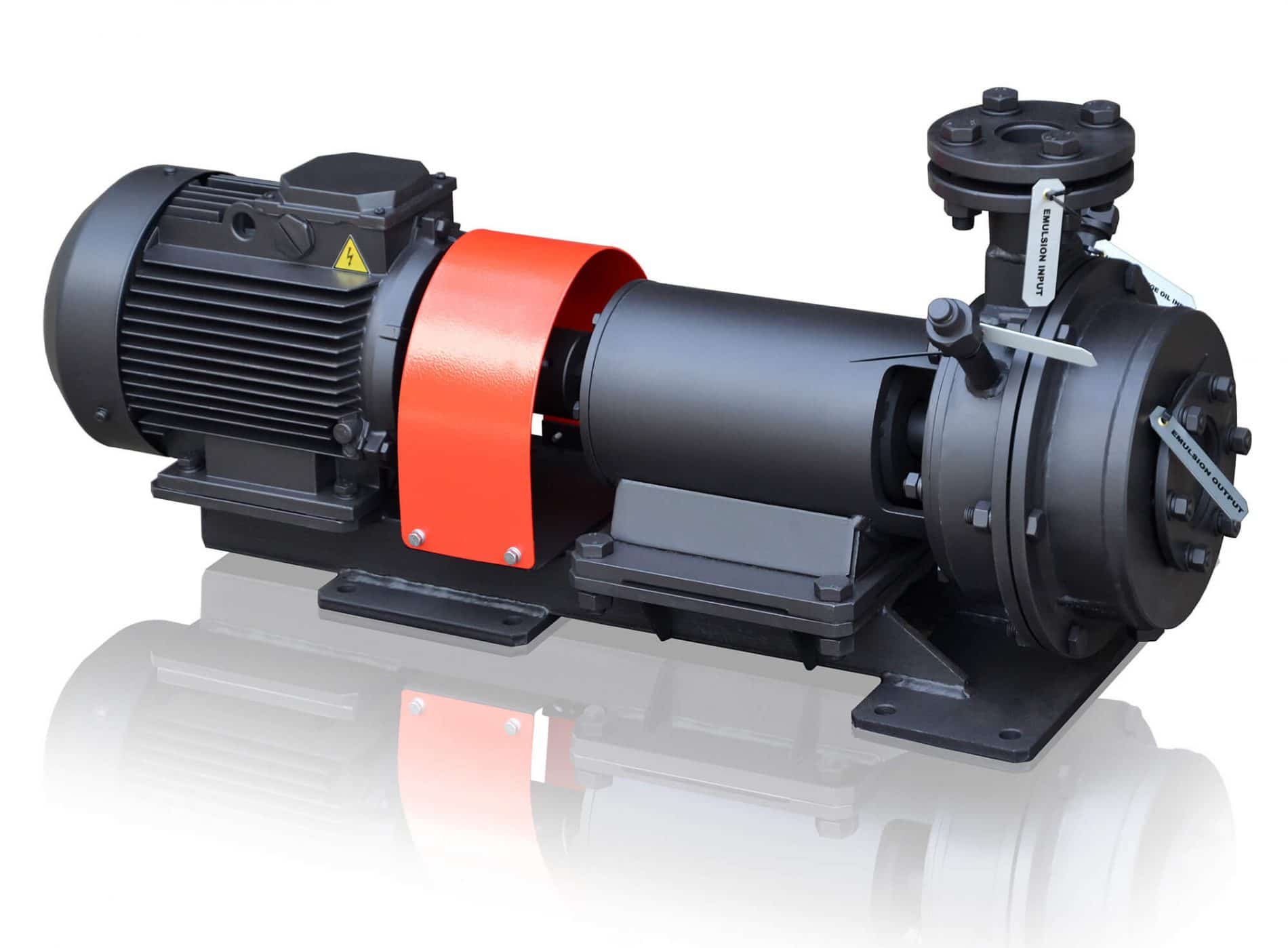Thanks to the combination of developments in acoustics, hydrodynamics and chemical kinetics, a new promising device is entering the market: the cavitation reactors, employed for processing of suspensions, emulsions and for intensification of chemical processes in solutions. These devices are can be used either separately (in laboratory test-benches) or in industrial mixing processes. In today’s market, two main types of cavitation reactors are available: the ultrasonic cavitation reactors and the hydrodynamic cavitation reactors. The latter are more popular due to simpler design, reliability and reasonable cost.
The modern cavitation reactor allows to continuously disperse (atomize a solid component), homogenize (further atomization of a fraction and increasing the uniformity of its distribution in a liquid), disintegration (breaking of complex substances into components), deagglomeration (destruction of particle agglomerates), as well as produce stable emulsions on industrial scale.
Any cavitation reactor is based on initiation of cavitation processes in the medium pumped through the reactor. Local low pressure due to the change of flow rate (hydrodynamic cavitation) or passing of a powerful sound wave (acoustic cavitation) cause intensive formation of cavities, which then collapse, generating shockwaves. In the hydrodynamic mixer, the process occurs when the liquid mix passes through specially profiled nozzles. In hydrodynamic reactos of advanced design, nozzle geometry is variable, facilitating control of the flow parameters depending of the liquid properties and the required result.
Beside geometric parameters of the cavitation reactor proper, it efficiency significantly depends on operating pressure in the reactor and the temperature of the liquid (emulsion or suspension). For instance, if the pressure of the liquid passing through the reactor is increased from 5 to 15 bar, the cavitation process is tens of times more intensive. It should be noted that the maximum intensity of the reaction process with increase of the pressure shifts towards elevated temperatures. It has been experimentally proven, that the optimal cavitation occurs when the liquid is heated to 65% of its boiling temperature at the current operating pressure.
In the process of operation, the internal surface of the mixing chamber and the nozzles of the cavitation reactor come under a significant loads, therefore, the responsible manufacturers of such devices, such as GlobeCore, use super strong materials, stable to both impact loads and abrasion. If the liquids to be processed are chemically active, the chemical stability of the reactor’s construction material is a factor.
The cavitation reactor made by GlobeCore as a part of the biodiesel production line is used to make the processed feedstock more uniform. Under the stress of cavitation shock waves, the molecular bounds of the biofeedstock are broken, and the particle size decreases to 1 – 8 micron. Processing in hydrodynamic mixer also increases the area of application of bacteria, intensifying biogas production by 30 – 50%.
The GlobeCore cavitation reactors are versatile in terms of processed media, compact and reliable, and hold a leading place in the world market in terms of price to quality ratio.

